In Central Oregon, the deer vastly outnumber all the dogs and cats in our neighborhoods. And while they’re docile creatures that we love to watch and admire, they’re also one of the most dreaded wildlife pests since they eat nearly everything in their path: seedlings, saplings, fruits, flowers, and for sure your most prized plant.
Turn your head and your garden can be decimated by a hungry deer in minutes.
I once asked a longtime landscaper what people can do about deer in their yards and she laughed and said, “You can’t!”
She was, for the most part, absolutely right. No matter how hard we try, we won’t ever do away with them completely.
Deer are something we have to live with (especially since we encroached on their territory) and we have to be at peace with some amount of deer damage.
But, a few key strategies can help us get the upper hand when it comes to saving our gardens.
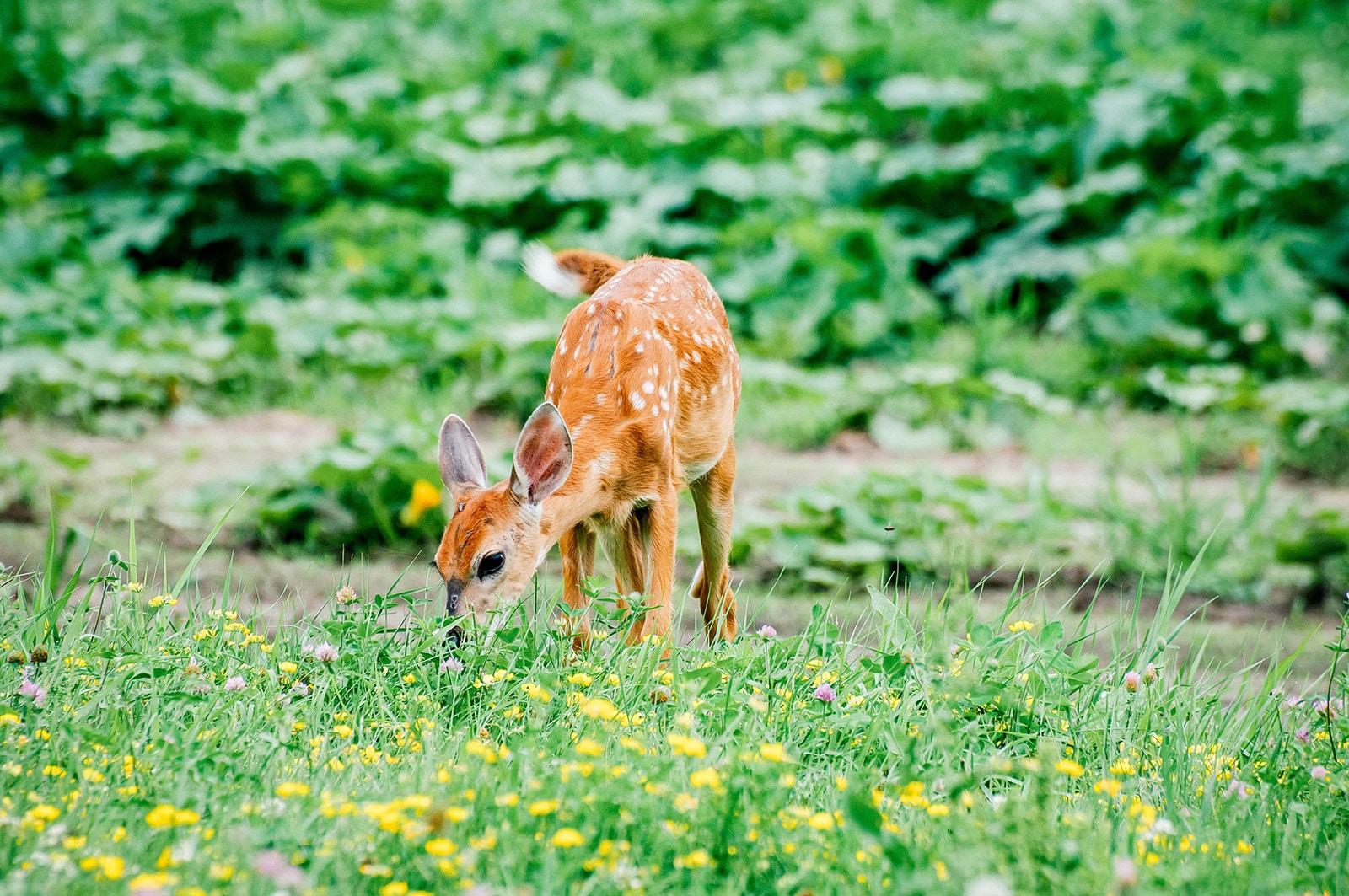
1. Plant things they don’t like to eat.
There’s no such thing as a deer-proof plant, so get that idea out of your head right now to save yourself from future heartache.
But, there are plants that deer don’t like to eat versus plants they like to eat… though a hungry or curious deer will try anything at least once or twice. So, don’t get discouraged if you find your new “deer-resistant” plants mowed down the next day!
Babies, especially, just want to try out the new salad bar item in your garden (which is why those transplants look so delectable). That’s how they determine which plants they like less than others. If they think it tastes nasty, they’ll just leave it alone next time.
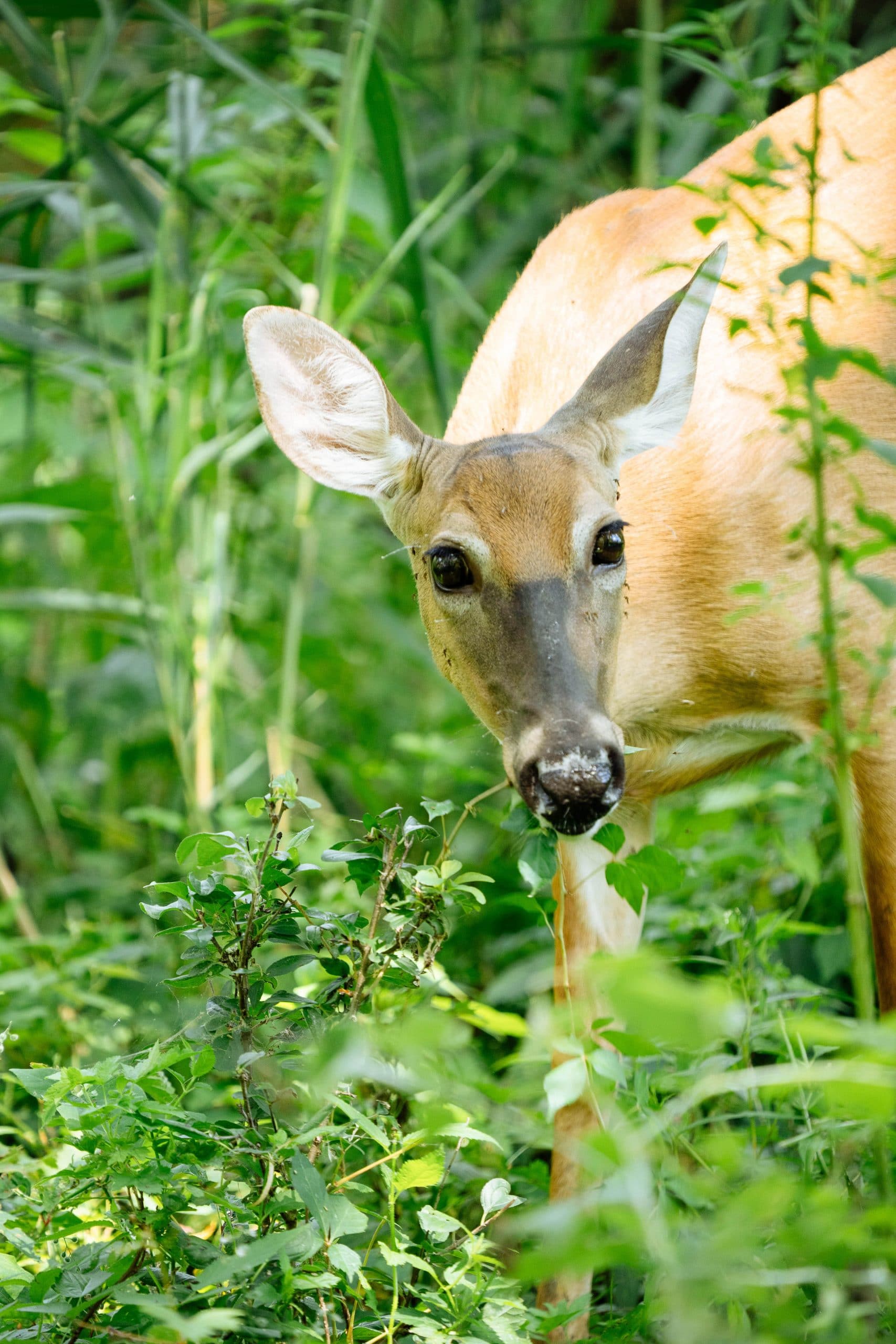
So what types of plants do deer not like to eat?
- Poisonous plants (like daffodils or foxglove)
- Plants with a strange or unappealing texture (like fuzzy or prickly leaves)
- Plants with strong scents or bitter flavors (like marigolds or peonies)
- Highly fragrant plants (like rosemary or lavender)
There are even fruits and vegetables that deer tend to avoid, which is good news if you grow your own food. Check out my comprehensive deer-resistant plant lists to help you design a less “appetizing” garden, so to speak.
2. Build or extend an existing fence.
When it comes to fences, there’s no need to electrify them to keep deer out of your yard. (Not to mention electric fencing is not a very practical solution if you live in town.)
If you want to build a truly effective deer fence, the best option is either:
- Tall enough to prevent deer from jumping over
- Low enough to prevent deer from crawling under
- Solid enough to keep them from seeing what’s on the other side
- Confusing enough to dissuade them from even trying
You don’t have to incorporate all four elements in your design, but utilizing at least one strategy should keep most (if not all) deer away.
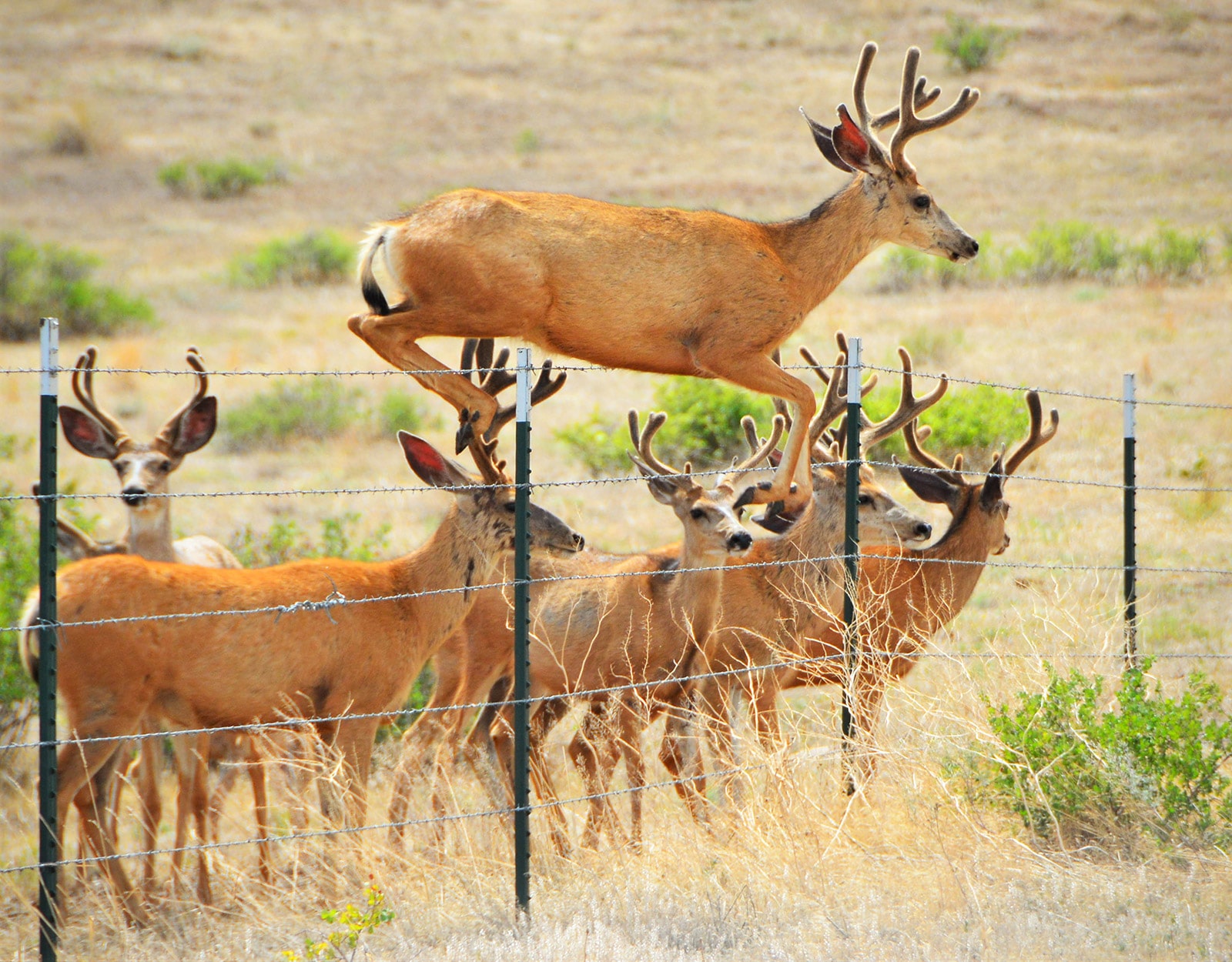
Go with 7 feet minimum. This is how tall a fence needs to be to keep deer from jumping over the top. (But don’t forget to look for any possible “launch pads” that may give the deer leverage, like a berm or rock pile near your fence.)
Be sure to check local municipal codes as some cities may restrict the height for solid fences or require a permit over a certain height.
If you’ve already got a decent fence built, you can extend the height by 1 to 2 feet by adding hardware cloth (or other wire mesh paneling) to achieve the 7-foot minimum.
No gaps at the bottom. Most people focus on the top of the fence so much that they forget about the bottom. But this is where fences could be vulnerable, because deer would much rather crawl under a fence than jump over it if there’s a sizable opening. (Remember, those tiny fawns are hungry and curious too!)
You might even have a fence that goes all the way to the ground, but if you have dogs that love to dig or issues with erosion in your yard, always check for gaps that allow deer to enter from below.
Out of sight, out of mind. If a deer can’t see through your fence, it simply won’t know what kinds of scrumptious things are growing in your garden. It may graze in your front yard but be oblivious to the buffet on the other side.
On top of that, deer depend on their legs for survival and won’t risk jumping over a fence if they can’t see their landing zone.
So when you build your fence, choose a solid design with no spaces between the boards. You can go a little shorter with a solid fence (about 5 1/2 to 6 feet tall) as it only needs to block the deer’s line of sight.
Mind tricks. I’m a fan of using a “psychological deer fence” to keep deer out of the yard. There are a few variations on this tactic, and all of them use some type of angled, double, or deceptive fencing to confuse them.
Deer have poor depth perception, so if a fence can’t be judged easily at first sight, it’ll move on.
A slanted wire fence (installed at a 45° angle) makes it difficult for deer to gauge just how far or wide the fence is. They don’t know if they can make the leap over (and clear the landing), and they don’t know if they have room to maneuver under (without getting tangled up in the lines).
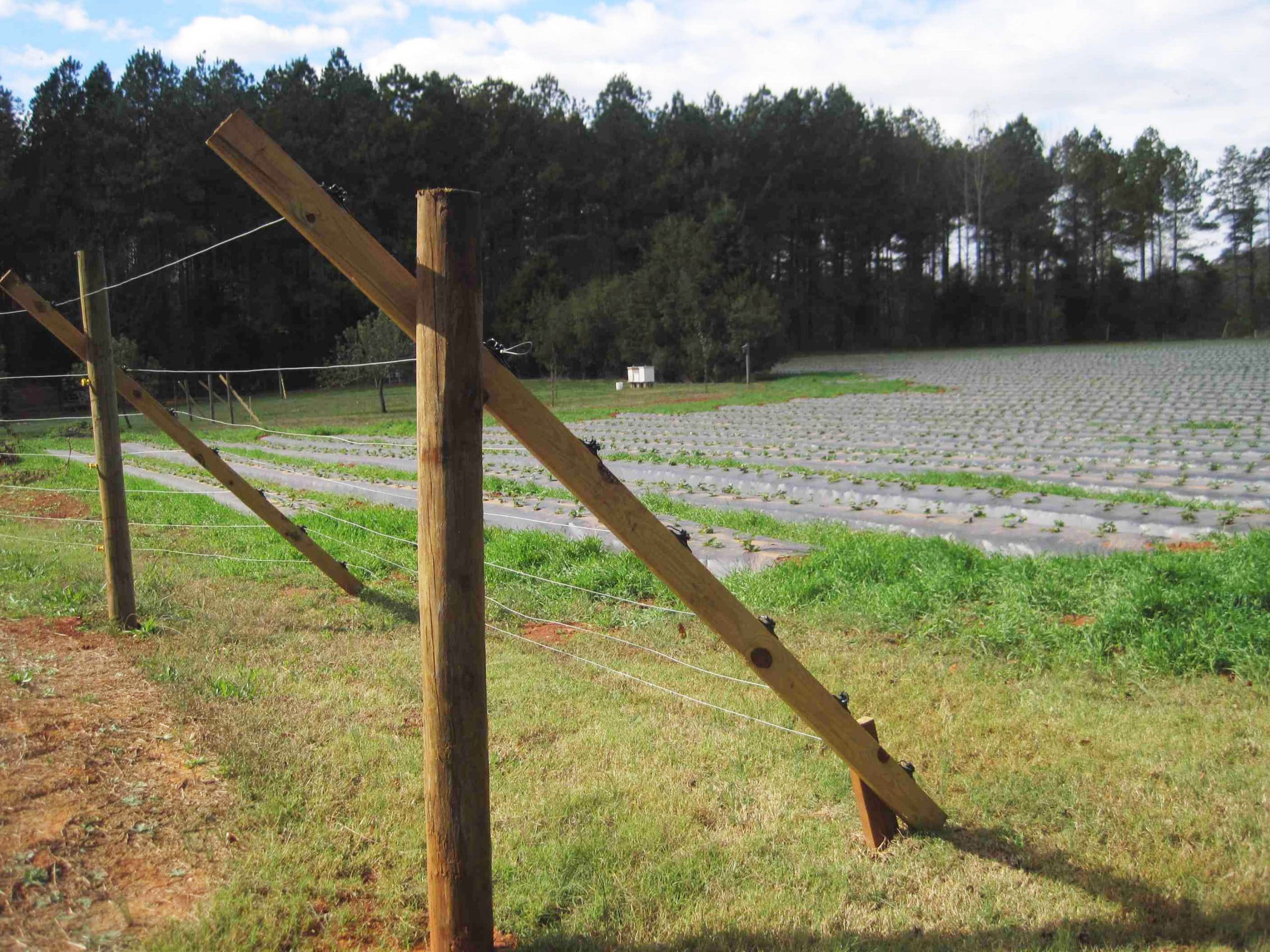
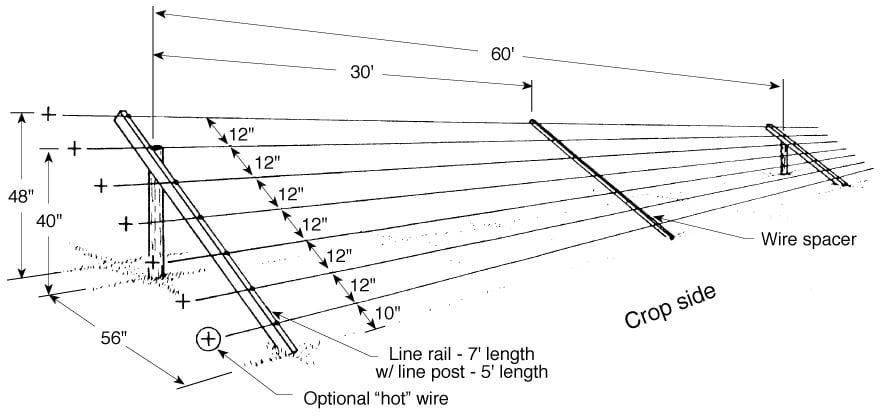
The same goes for double fences, spaced a few feet apart. But costs add up considerably if you build two sets of the same fence, so my favorite trick with the double-fence technique is putting a second, very minimal fence about 3 feet inside of the first fence.
This second fence can be as simple as steel T-posts driven into the ground every 6 feet or so, with a sturdy line (like heavy-gauge wire or thin rope) strung between the posts at the 4-foot-tall mark and 8-foot-tall mark.
If your first fence is only 5 or 6 feet tall, the jarring 3D illusion of the lines behind it is enough to deter deer from jumping.
Benefits of this technique? You can design the first (outer) fence however you want, you save money on a second (inner) fence, and it blends in much better with the environment than building a super tall fence or solid fence.
If you’re not concerned with how the fencing looks (for example, you only need to enclose your vegetable garden and not your whole yard), you can install a double 3D fence using solely wire.

This is very cost-effective, especially for larger properties or rural properties, and installation is similar to the way electrified deer fencing is put up—except electrifying the wires is completely unnecessary.
Disclosure: If you shop from my article or make a purchase through one of my links, I may receive commissions on some of the products I recommend.
3. Enclose garden beds or plants individually.
If you only need to protect a few vegetable beds or specific plants, it may be easier to enclose those plants individually with cloches, cages, netting, or other physical barriers.
This makes the most sense if you have to control other garden pests as well, such as raccoons, opossums, or rabbits. Depending on the type of enclosure used, it could also protect seedlings from insect pests that lay eggs and hatch their young on vulnerable leaves.
There are several different types of enclosures that work well for home gardens:
- Extra tall crop cages fully enclose an in-ground garden bed but have zippered openings, so you can walk in and harvest your plants without removing the cage.
- Mesh pop-up enclosures easily cover a standard raised bed with no assembly required, but are portable enough to move around and collapse flat for storage.
- Chicken wire crop coops are smaller cages designed to protect entire raised beds or just where you have new plantings.
- Poly deer netting is strong yet lightweight, and can be attached with posts to wrap around large or irregularly shaped spaces where a pre-made enclosure won’t fit.
- Chicken wire cloches cover individual plants that need extra protection in an otherwise deer-resistant landscape.
4. Use deer spray or other natural repellents.
When used correctly and diligently, deer repellent sprays are very effective. Many of them include active ingredients like cinnamon, clove, or mint in their formulas (scents that deer dislike) and are harmless to wildlife, pets, and children.
I do recommend switching things up once in a while by using different brands of deer spray (which vary slightly in scent blends) so your local deer don’t become accustomed to the smell.
Here’s a list of the best deer repellents on the market that I recommend.
You can also make your own repellent (a Google search for “DIY deer repellent” will bring up many options) but be aware that homemade deer sprays have to be reapplied after every irrigation cycle or rainfall.
Motion-activated sprinklers and ultrasonic noise makers are also effective to some degree, but it helps to change their location every couple of weeks so the deer don’t get used to them.
5. Never feed the deer.
Well-meaning people think they’re being helpful by setting out food and water for deer, but feeding wildlife is always a bad idea. Not only will you be adding to your own deer troubles, but those of your neighbors as well.
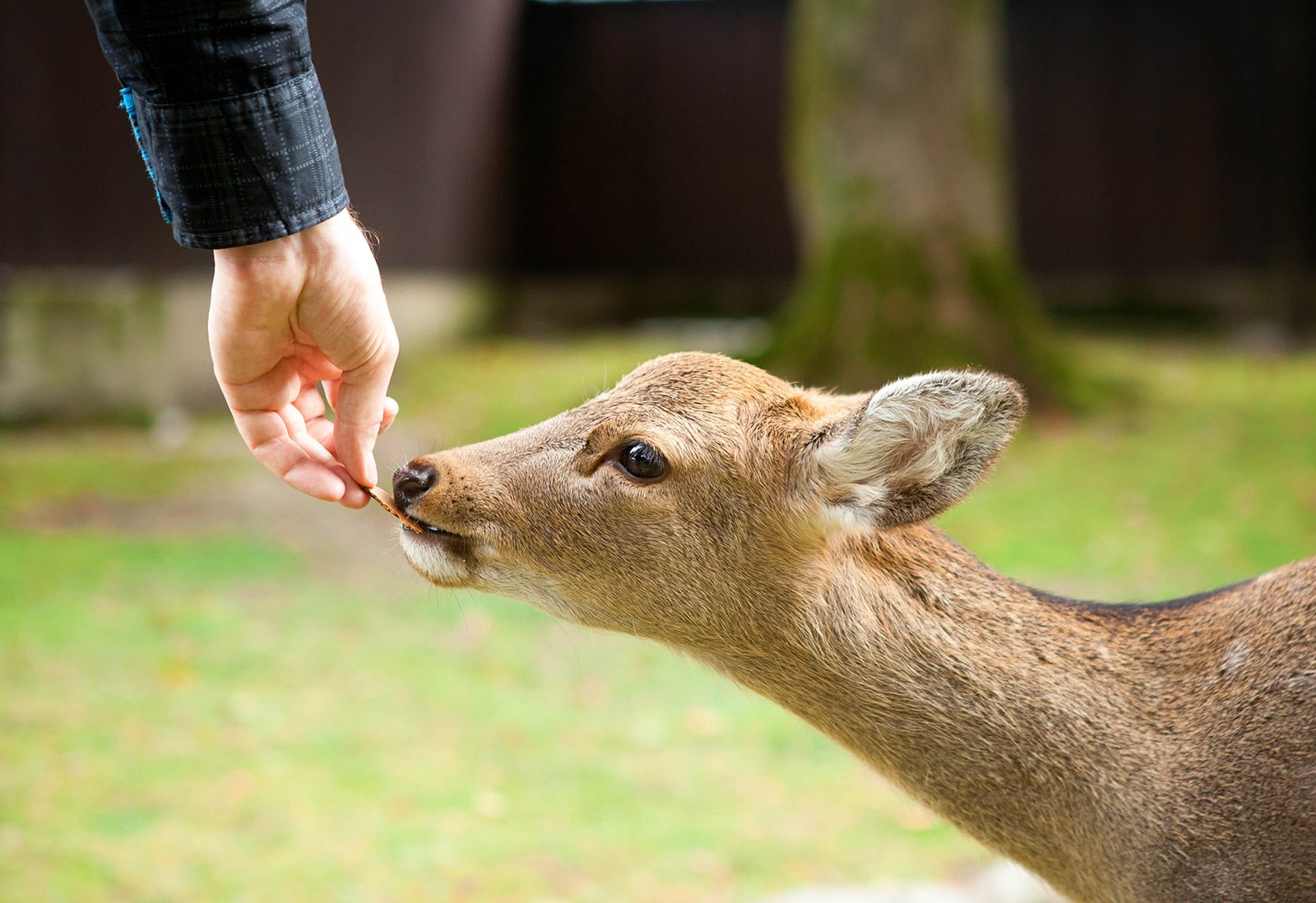
Deer will congregate in places where food is readily available (and bring their friends along too) which can lead to an unhealthy lack of fear toward humans, increased risk of disease transmission between animals, vehicle collisions, and habitat degradation. (The Pennsylvania Game Commission has an excellent document about this here.)
Encouraging deer to come around your yard can also be unsafe for your pets. Though deer are generally very timid and gentle, they’ve been known to attack dogs if they feel threatened or want to protect their young.
So keep the deer at a distance and leave them alone. With a little planning and effort on your part, hopefully they’ll do the same for you.
More posts you might find helpful:
- 200+ Deer-Resistant Plants and Flowers For Your Garden
- These Are the Best Deer Repellents For Your Lawn and Garden
View the Web Story on how to keep deer out of your garden.


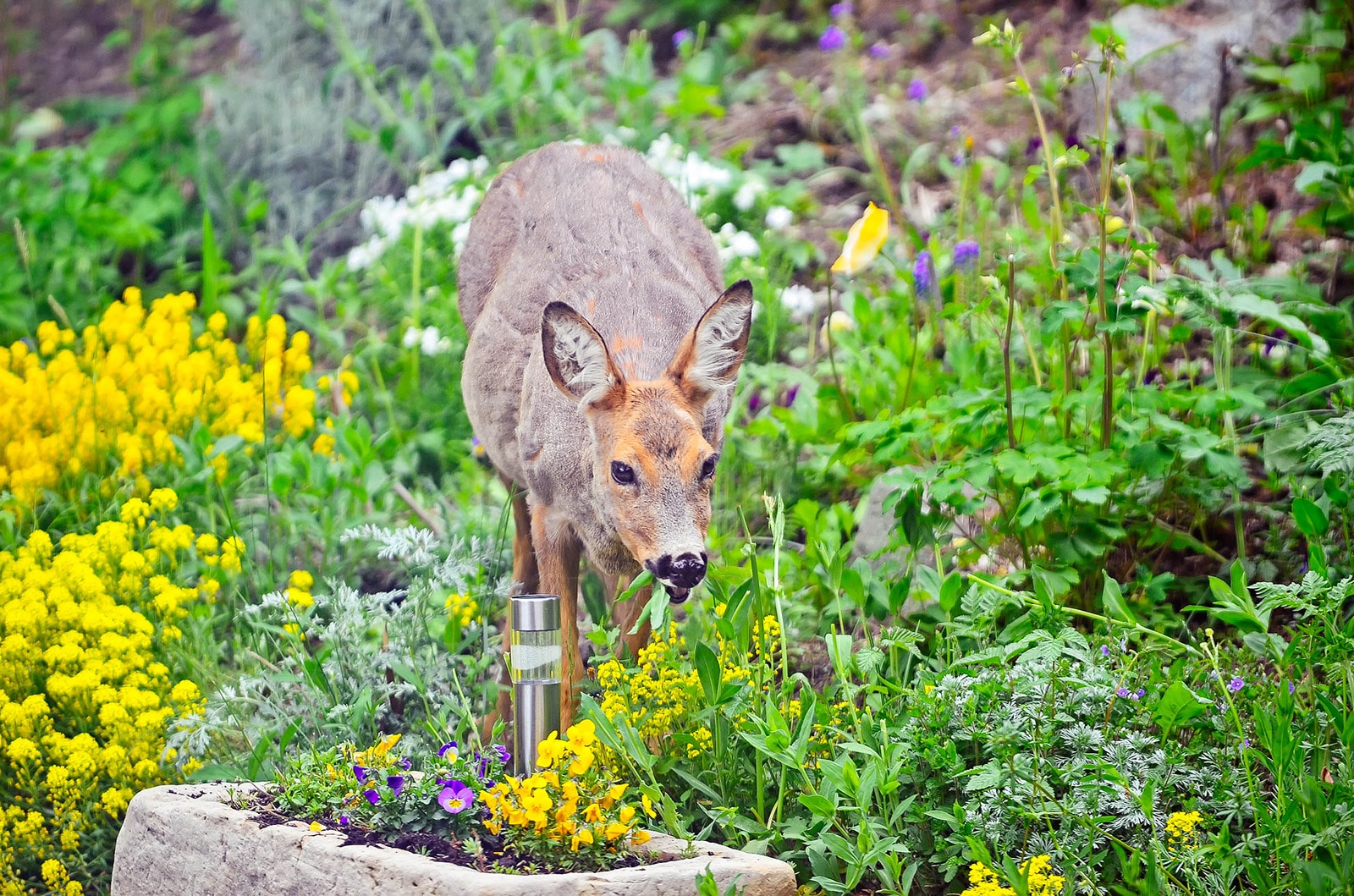













Another approach is wirelessdeerfence dot com. The idea is to train them with pain so they go elsewhere. I had a couple among 25 new thornless blackberry the deer decided they loved.
Perhaps the value is in combination with other deterrents. One blackberry was eaten down to the level of the electrodes.
The best deer repellent I ever found was called scarecrow motion detected sprinkler you could set the distance and the radius and the deer stayed just out of reach which was fine with me as long as they weren’t eating my garden. I tried everything that’s the only thing that ever worked and I loved it!!
In my experience, motion-activated sprinklers are effective if they’re moved every so often. If you have the same deer visiting your yard all the time, they can sometimes get used to it and not be bothered by the water. Depends on how desperate they are. 🙂
The plants they don’t like? I tried that, they either nosed around in the pot and uprooted them without eating (I lost at least a dozen plants that way) or they ate them. Even the garlic.
Strong smelling soap is what worked for me. I tossed bars of Irish Spring and Dr. Bronner’s Peppermint around the garden and they finally left it alone, even though they munched grass just a foot or two away.
Deer will usually try anything at least once to see if they like it, especially the fawns. But as you discovered, they do tend to stay from strong scents like peppermint!